
Imagine living free from utility bills, city sounds, and the chaos of civilization, all possible with a properly designed off-grid cabin. Off-grid living should not be associated with discomfort and austerity; in today’s world, small cabin plans deliver modern comforts with minimal environmental impact.
There is growing documentation of the mental health benefits of this lifestyle, as well as a boost in self-reliance and simplicity while reconnecting with nature. At the same time, the confluence of rising environmental issues and increasing housing costs makes the off-grid cabin as much a practical solution as a meaningful philosophical statement.
1. Traditional Log Cabin

Classic log cabins are an excellent option for off-grid enthusiasts. They combine modern self-sufficiency with a vintage appearance. Newer examples, such as The Shank Wood Cabin, use local timber, heritage design elements, and simple advancements like solar panels for energy, wood stoves for heat, and outdoor hot tubs for an enjoyable soak.
Modern log cabins demonstrate that traditional and sustainable technologies can coexist and offer aesthetically pleasing and reliable shelter with low impact. Mentally, the attachment is obvious: the log cabin is furiously nostalgic. It subconsciously induces comfort and groundedness while allowing you the experience of living outside of a vehicle or city infrastructure.
2. Politely Urban Utility Kitchen
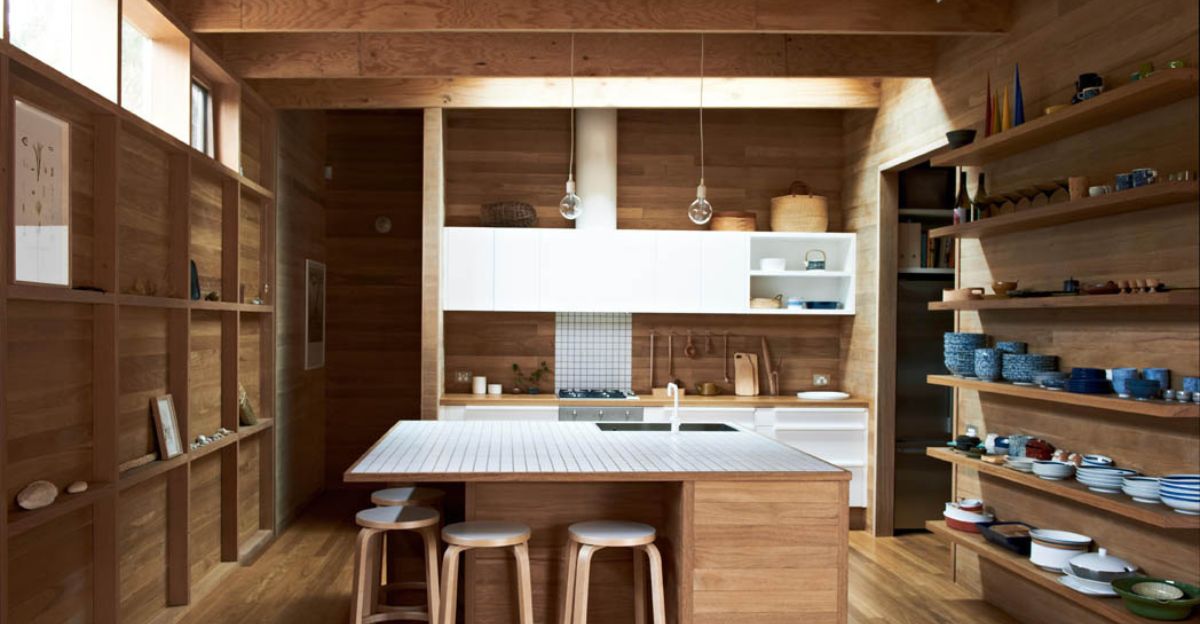
Not all off-grid cabins sacrifice function for fashion. Take, for example, the Utilitarian Chic Kitchen: a tiny, solar-powered retreat with exposed copper pipes and tongue-and-groove cabinets styled into design features.
The kitchen handles are fashioned from the branches of trees outside the woods, blurring the line between function and art. This design sensibility, in which every element is functional and beautiful, contradicts the stereotype that off-grid living must be austere.
The result is a space that inspires creativity, functionality, and a deep appreciation of craft, showing that minimalism can be both practical and beautiful.
3. Warm and Cozy

Living off-grid in extreme environments requires creativity. In Alaska, cabins like @taaylor_rohner utilize a wood stove as their primary heat source, with diesel and propane heaters as backups on frigid days.
This layer system provides comfort and security, even when the mercury hits freezing point. The cabin is tough and rugged, representing a lot of psychological fortitude to thrive in those climates.
Off-grid living requires a lot of preparation and resourcefulness, as well as surviving without the convenience of the systems in place when living within a community and doing so in the harshest climates.
4. Hot Water Solutions

Hot water is a luxury many people use without even thinking about it. Off-grid cabins like those of @lifewithlaceypark don’t overly effectively complicate this task. Water is taken from a community well and transported to be heated on a wood stove, and stored in large pots and kettles for use throughout the day.
It is sustainable to haul the water from somewhere with minimal pollution, save the energy of running your water heater full time, and create the mindset of doing what you’ve got. The psychological experience is huge: every hot water drip is hard-worn, treasured, and enjoyable. The best thing about the whole process is that it is ritualistic.
5. Solar Power
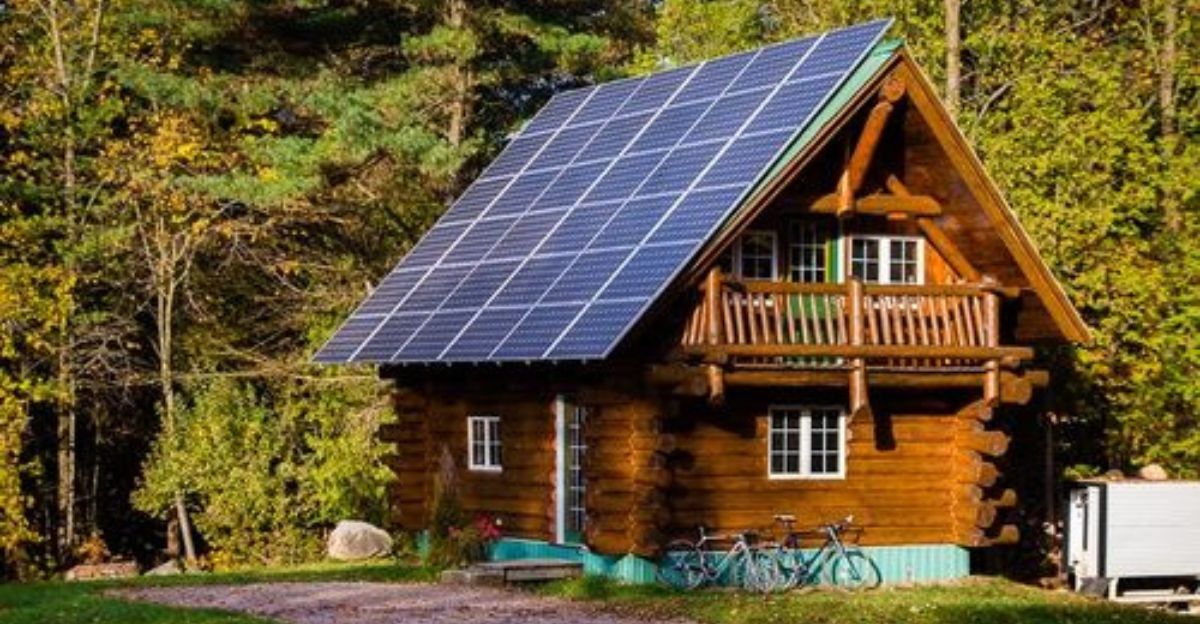
The house they moved into had solar panels, which you can see in the images. The mental benefit is substantial: solar power offers independence from the grid, alleviates fear of energy costs, and enables residents to live in harmony with the environment.
With solar technology becoming affordable and efficient, even the remotest cabins can enjoy the luxury of lighting, internet, and appliances, and shrink their environmental footprints.
6. Sustainable Insulation
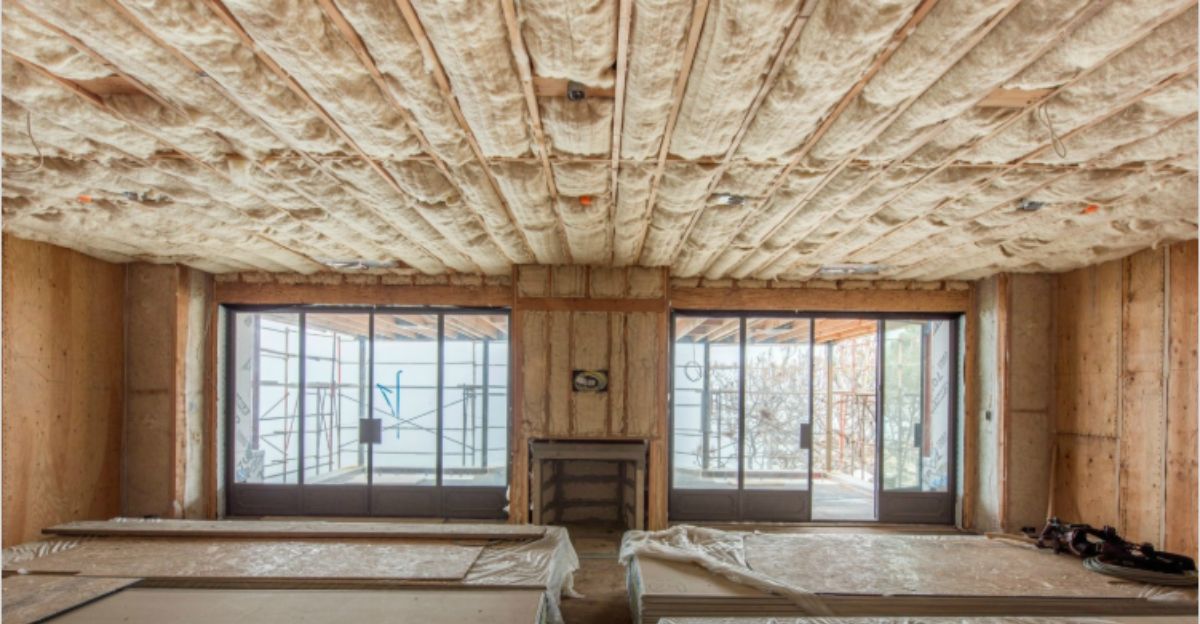
Emerging-generation insulation materials, such as sheep’s wool, are widely used in off-grid cabins because of their sustainability and effectiveness. Scottish modern off-grid bothies use sheep’s wool insulation for walls to attain breathability, fire resistance, and sound dampening.
This choice is part of a broader movement towards locally sourced, renewable materials. The psychological benefit is clear: knowing your home is made with natural, nontoxic materials brings peace and a connection to nature. Green insulation isn’t just practical; it’s a statement of values.
7. DIY Shower House
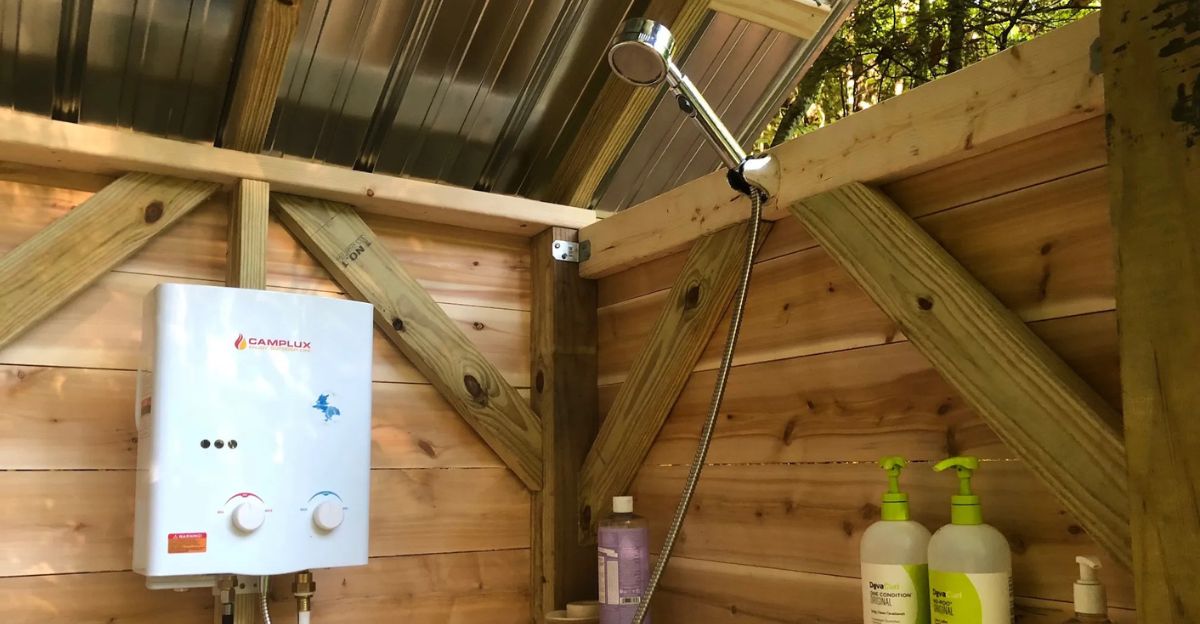
A warm shower in the wilderness is no longer a fantasy. Off-grid cabin residents can include DIY shower houses, where water resides in totes, propane-heated, and battery-powered. They are easy to construct and surprisingly comfortable.
The psychological effect produced is staggering: developing remote locations where a hot shower is a minor indulgence in comfort can considerably improve life in these remote locations.
This invention plays on the notion of off-grid living as a decision. The choice is for simplicity, not necessarily at the expense of comfort or convenience.
8. Off-Grid Tiny House

Off-grid tiny house culture is revolutionizing small dwellings. Efficient, modern designs like the 380-square-foot cabin from Elevated Spaces Shop include open floor plans, loft bedrooms, and complete blueprints for those who would do it themselves.
These homes are easier to power and maintain, perfect for off-grid living. The psychological allure is irrefutable: tiny houses encourage living with intention, vanquish unnecessary stuff, and value experiences over possession. With housing prices soaring upwards, the small house is a practical, liberating solution for those who want freedom and simplicity.
Key Takeaways and Next Steps
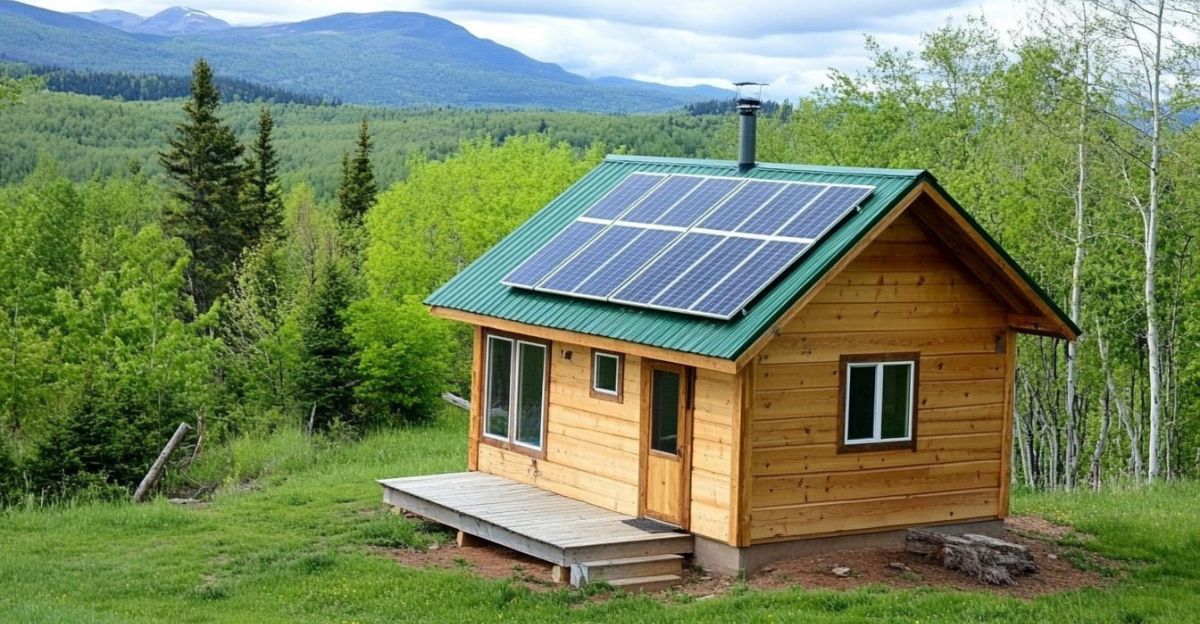
The eight tiny cabin designs featured here prove that living off the grid is not an escape from modernity, but a reinterpretation. All eight designs balance functionality, eco-friendliness, and mental wellness, lessons in a world facing environmental and economic crisis.
The trend towards smaller, more intelligent houses will continue to accelerate as costs increase and independence becomes more necessary.
For those of you considering the move to this style of living, just understand that the process starts small, prefer self-reliance, and enjoy the mental and physical benefits of living an independent lifestyle. The future homes may lie within these clever, off-grid bunkhouses.
